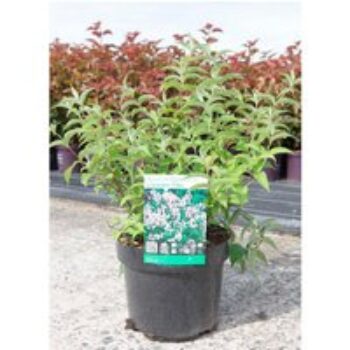- In Ecuador, the main areas of colonization were a north-south corridor along the base of the Andes and the Sucumbíos-Orellana quadrant, the country’s major oil-producing region.
- Since the 1970s, populations in both areas have grown significantly. The Andean zone went from 160,000 inhabitants to more than 520,000 in 2017; in parallel, the population in the provinces of Sucumbíos and Orellana increased from less than 12,000 to more than 350,000.
- Colonization also led to the invasion of lands of the indigenous Shuar, which prompted an unusual effort on their part to protect their territory. Today, the area specializes in cattle production and seeks to establish a niche market for high-quality beef for the domestic market.
Throughout most of the twentieth century, the Ecuadorian authorities pursued a geopolitical strategy that reflected a long-held conviction that they were cheated out of large territories in the Western Amazon. Most of their claims were adjudicated in favor of Peru and they were on the losing side of border disputes in 1860, 1903 and 1941. Consequently, successive governments were intent on not losing another square meter of what they fervently believed was their national territory, a policy that led to the construction of several highways and deliberate policies to foster migration into their lowland provinces.
Peru and Ecuador resolved their differences in 1998, after another border dispute, via an arbitration process coordinated by the governments of Brazil, Argentina, Chile and the United States. In the process, the countries established paired national parks on both sides of the border, and an ambitious IIRSA-sponsored initiative was launched to provide Ecuador with direct access to the Amazon waterway at Puerto Morona. The resolution of the border conflict and the much-improved transportation infrastructure opened up the Cordillera del Condor to large-scale mining operations operated by Canadian and Chinese corporations.

Migratory pathways
Migration into Amazonian Ecuador has occurred via four highway routes that connect urban centers in the Andes with a town or small city in the lowlands; from north to south, they include Quito to Nueva Loja (E10), Ambato to Puyo (E30), Cuenca to Macas (E40) and Loja to Zamora (E45). These roads channeled migrants into two major colonization landscapes: a north-south corridor along the base of the Andes, and the Sucumbíos-Orellana quadrant, which is also the country’s primary oil-producing region. The population along the piedmont grew from about 160,000 inhabitants in 1970 to more than 520,000 by 2017; simultaneously, the inhabitants of the Sucumbíos and Orellana provinces increased from fewer than 12,000 to more than 350,000.
Most communication was up and down mountain valleys between individual highland and lowland population centers, but eventually these communities were linked by a rudimentary north-south highway (Route 45). Multiple roads extended east into the Amazon lowlands, including one along the border to Tiwinza, a military post on the Santiago River, and an alternative route from the north to connect with Puerto Morona on the Morona River.
This latter route caused significant encroachment by Colonos on traditional lands of the Shuar Indigenous people in the 1970s and led to an unusual effort on their part to protect their land. This occurred two decades before Indigenous organizations launched their campaign to promote communal tenure regimes, and Shuar families had no option but to apply for legal title using the administrative procedures of the national colonization agency. This obligated them to deforest small plots within the larger landscapes of their traditional territories.
In 1997, the government allocated funds to improve infrastructure, with the modernization of Route 45, now known as the Troncal Amazónica. Settlement along the highway and into the Amazonian lowlands occurred mainly in the 1970s via development initiatives organized by a regional development entity (CREA) with financing from the IDB. The area now specializes in cattle production and seeks to establish a niche market for high-quality beef for the national market.

Migration into the southern sector was supported by a regional development organization, but most immigrants came on their own. They included Indigenous Quechua speakers, as well as Ecuadorians of mixed racial heritage, all of whom encroached upon the traditional lands of the Shuar. The super humid climate and rolling topography make intensive cultivation impossible, and the principal economic activity is raising beef and dairy cattle.
In contrast, colonization of the Sucumbíos-Orellano quadrant reflects a proactive settlement policy implemented by the central government after the completion of the highway between Quito and Lago Agrio in 1967. The military government declared Sucumbíos a ‘zone for migration and expansion’ in 1972 and sent teams of surveyors to lay out transects of fifty-hectare plots (250 meters by 2,000 meters) for distribution to new arrivals. The network of nearly identical landholdings was established along a rapidly expanding secondary road network, which was created to support the feeder pipelines that carry crude oil to pumping stations in Lago Agrio.
The soils in the quadrant are relatively fertile, which has allowed for the development of a diverse assemblage of productive systems, including food staples and cash crops such as coffee, cocoa and palm oil. Like other colonization schemes of the 1970s, poor infrastructure and inadequate public services led to widespread disenchantment, and many farmers abandoned their farms. Simultaneously, oil field workers filed claims to acquire plots or purchased abandoned farms from people seeking to leave the region. Many owners adopted a beef production strategy that allowed them to meet the legal requirements for a land claim, but which could be managed by an absentee owner. Consequently, the ethnic makeup of the quadrant is relatively diverse.
The government now seems dedicated to promoting the development of Amazonian Ecuador by embracing the intensification of agricultural production on previously deforested landscapes, while promoting a diversification of production strategies. The government continues to build new oil pipelines and access roads as it expands into new production fields in previously remote landscapes in and around Yasuní National Park. The government’s insistence on developing these assets is highly controversial and a source of conflict with Indigenous groups, particularly the Waorani, whose ancestral territory lies over Ecuador’s most valuable oil reserves.
“A Perfect Storm in the Amazon” is a book by Timothy Killeen and contains the author’s viewpoints and analysis. The second edition was published by The White Horse in 2021, under the terms of a Creative Commons license (CC BY 4.0).
To read earlier chapters of the book, find Chapter One here, Chapter Two here, Chapter Three here, Chapter Four here and Chapter Five here.

Chapter 6. Culture and demographic defines the present








